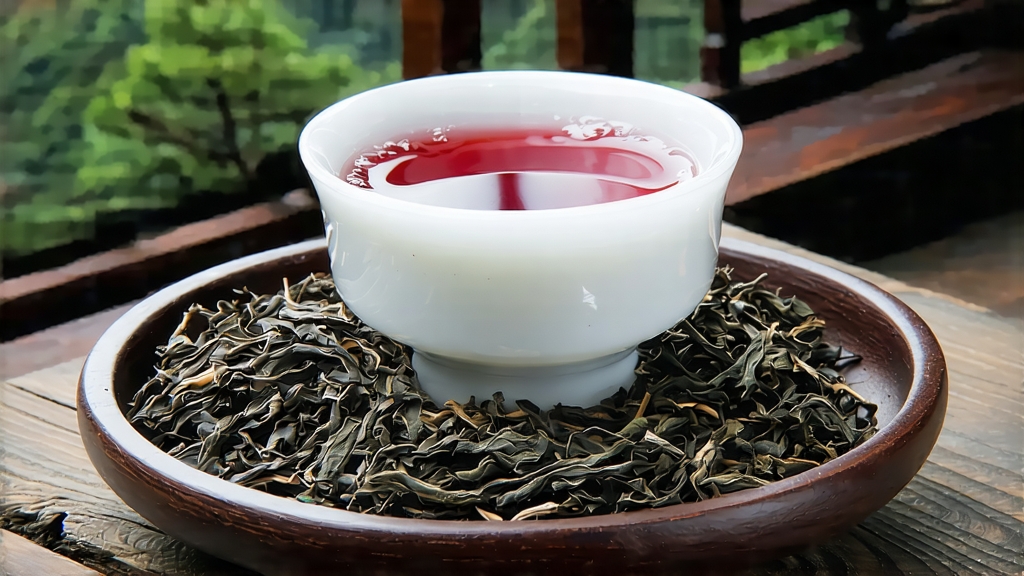
Long before Assam, Ceylon, or Earl Grey entered the global lexicon, a small village in the Wuyi massif of Fujian province was already sending aromatic curls of smoke-laden tea across the South China Sea. That village—Tongmu Guan—and its gift to the world is Lapsang Souchong, the oldest known black tea and the prototype for every later red (hong) tea. To understand Chinese black tea is to begin here, where charcoal and pine needles once rescued a harvest and accidentally created a flavor that would seduce European courts, fuel the clipper-ship races, and still, four centuries later, inspire specialty roasters from Paris to Portland.
Historical records kept by the local Xingcun guild show that “Xiaozhong” leaf—literally “small cultivar”—was first fully oxidized around 1568, late Ming dynasty, when a passing army commandeered the tea workers for rations. By the time the soldiers left, the green leaves had turned deep mahogany; desperate to salvage value, the farmers dried them over fresh pinewood fires. The resulting tea, dark yet sweet, traveled down the Nine-Bend River to the port of Xiamen, where Dutch traders christened it “Bohea” (from “Wuyi”) and shipped it to Amsterdam at prices higher than silver. Within fifty years Lapsang Souchong had become the fashionable drink of London coffeehouses, and by 1662 Catherine of Braganza’s dowry chest included a private caddy, cementing tea’s status in Britain and, indirectly, the future of the East India Company.
Today the European Union recognizes Tongmu Guan as a Protected Designation of Origin; only leaf picked within the 565 km² core zone may legally bear the name Zheng Shan Xiao Zhong (“Original Mountain Small Cultivar”). Yet the term “Lapsang Souchong” is still applied—sometimes loosely—to any Chinese black tea that carries a whisper of smoke. Purists therefore distinguish three ascending grades:
-
Traditional Pine-Smoked Zheng Shan Xiao Zhong: harvested from indigenous vegetable-leaf tea trees (a heterogenous population of Camellia sinensis var. sinensis averaging 80–250 years old) growing between 600 m and 1,200 m on weathered tuff soil. The leaf is withered over slow pinewood embers, oxidized in bamboo baskets, then pan-fired and finally smoked a second time in a honglong (“baking cage”) lined with fresh Masson pine bark. The finished tea is glossy, strip-shaped, and smells of longan fruit wrapped in campfire.
-
Semi-Smoked or “Fruit-Style” Xiao Zhong: same origin but smoked only once, or with fir rather than pine, yielding a softer resin note that allows cocoa and honey nuances to surface.
-
Unsmoked Xiao Zhong: processed like a modern red tea—withered on bamboo racks, oxidized 3–4 h, baked at 80 °C—showing malt, dried apricot, and mineral Wuyi rock charm without any smokiness. This version has become popular among younger Chinese consumers who want the sweetness of gongfu black tea minus the campfire.
Crafting any of these styles begins at dawn in late April, when the mountain air is 12 °C and 85 % humidity—ideal for gradual moisture loss. Two leaves and a bud are plucked, 4–5 cm long, still dewy. They are immediately laid 3 cm deep on screens suspended above a ground-level hearth of pinewood logs that have aged one year to reduce resin volatility. The withering room is sealed; every 20 minutes the master gently tosses the leaf by hand, allowing edges to bruise and oxidation enzymes to meet oxygen. After 6–8 h the leaf loses 60 % moisture, turns chestnut, and emits a baked apple aroma. Rolling comes next: 35 min of light pressure on a bamboo tray to rupture cells without shredding the leaf. Oxidation follows in wooden troughs lined with wet cotton; temperature 24 °C, humidity 90 %. Color shifts from copper to dark chocolate, and a sweet raisin note peaks. The critical smoking stage differentiates Lapsang from all other black teas. Pinus massoniana bark is burned at 200 °C; the smoke is ducted into the drying chamber for 2–